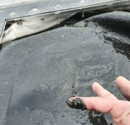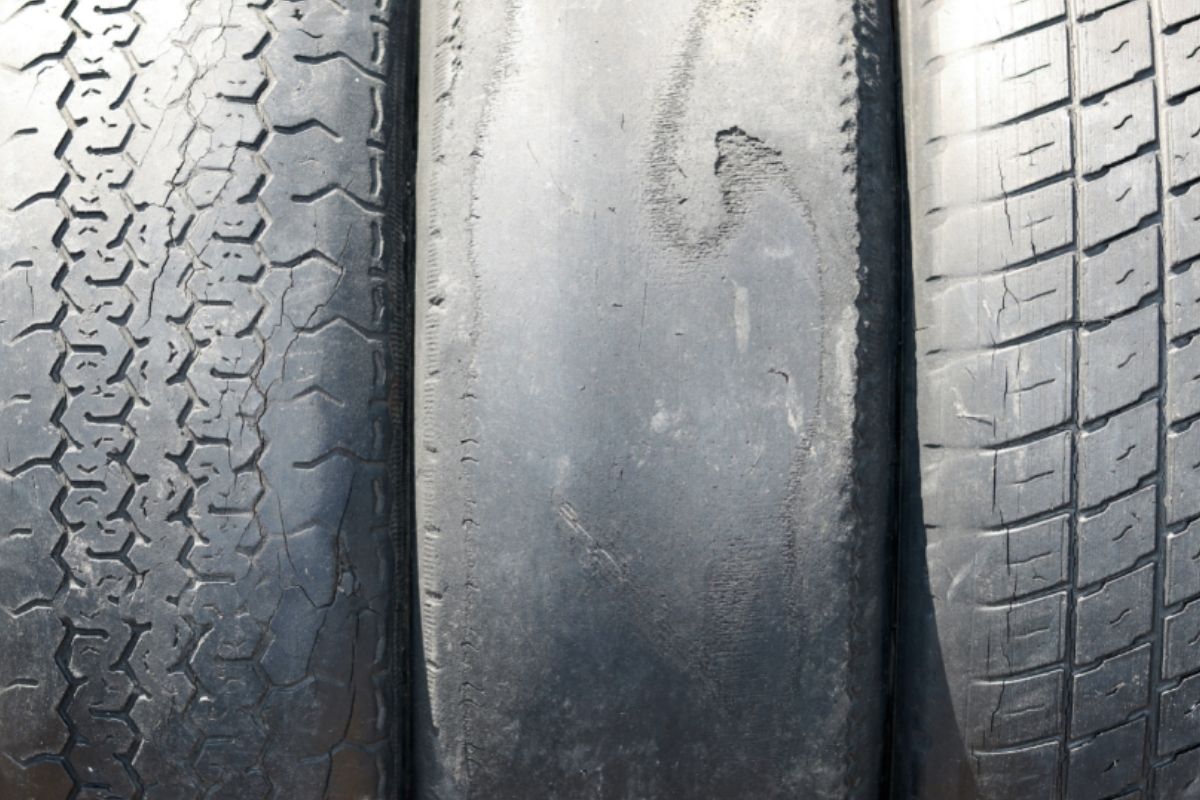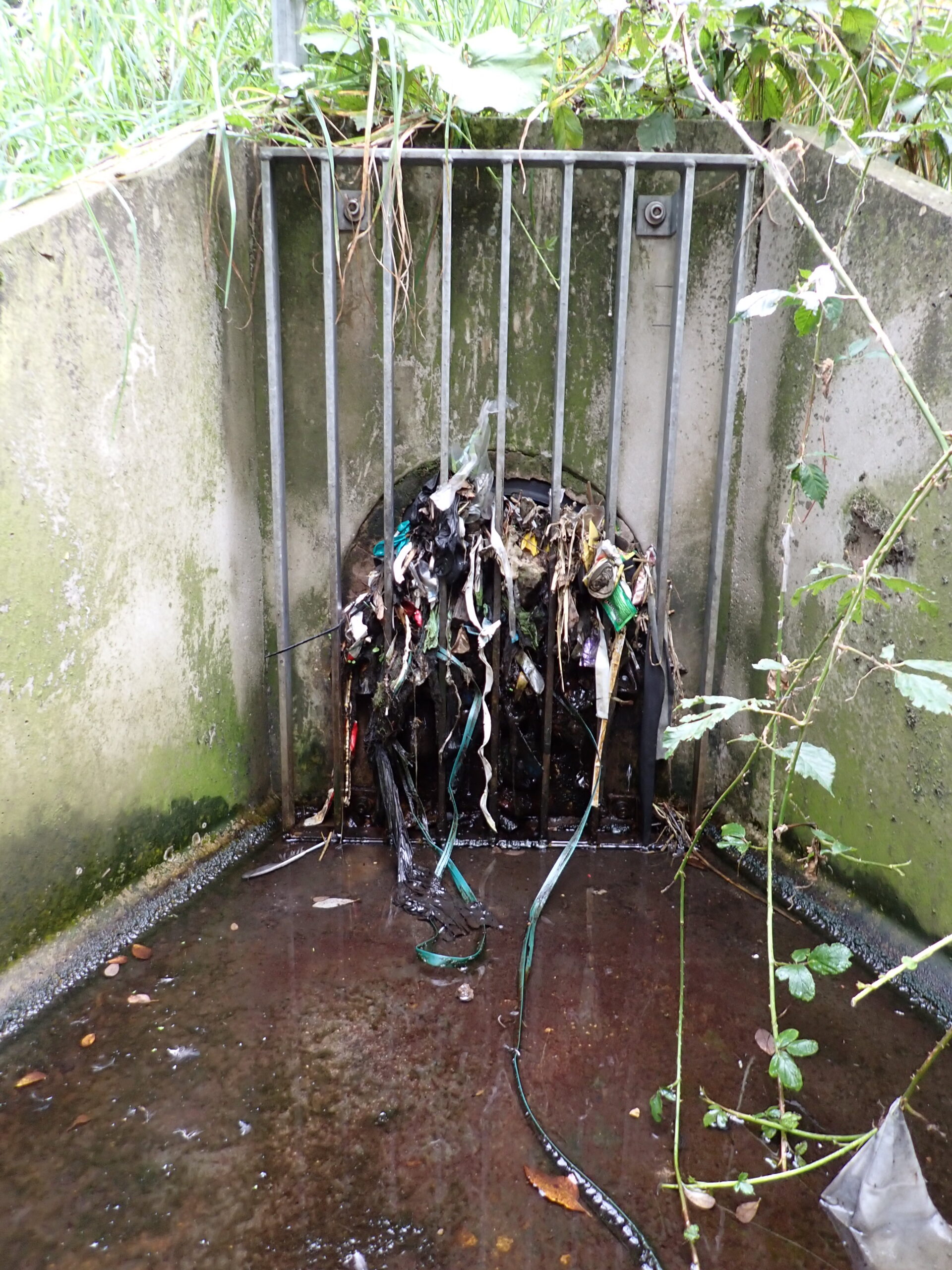In this article, we’ll talk about how microplastics from tyre wear pollution end up in our waterways and oceans, where they endanger many marine mammals. Then, we’ll talk about the small things we can do to prevent or reduce tyre wear pollution.

How Tyre Wear Emits Microplastics
Modern tyres are composed of only 19% natural rubber. Synthetic rubber—meaning plastic polymer—makes up about 24%. When you brake, speed up, or ‘take the curve’, your tyres shed thousands of rubber and plastic fragments that are referred to as ‘Tyre Wear Particles’ or (TWP)

Modern tyres are composed of only 19% natural rubber. Synthetic rubber—meaning plastic polymer—makes up about 24%.
The rest is composed of metals (steel wires under the tread), plastic fabrics like polyester and nylon, carbon black and silica fillers, and chemicals used to strengthen and cure the rubber (e.g. Sulfur and Zinc Oxide)
TWPs are some of the biggest sources of microplastic in our inlands and waterways. While more studies are needed to estimate how big of a problem TWPs really are, a 2021 report by the European Commission estimates that 1.3 million tons of TWPs are generated in Europe every year. It is estimated that tyre wear contributes about 50% of Denmark and Norway’s microplastic emissions, and 30% that of Germany’s. Globally, the contribution of TWPs to the total amount of marine plastic pollution is estimated at 5-10%.
With tyre wear shaping up to be such a key contributor of microplastics in the environment, it is unsettling how it often goes unnoticed as a pollutant source.
Emissions Analytics, a UK-based independent global testing and data specialist, reports that vehicle tyre wear is entirely unregulated worldwide. The report identifies pollution from these tyres as possibly 1,000 times worse than the pollution from a car’s exhaust.
How Tyre Wear Pollutes Stormwater

During heavy rain, TWPs are washed off our roads. Approximately 95% of these tiny particles end up in stormwater networks, which convey them into our creeks, rivers, harbours and oceans. When TWPs reach inland waterways and oceans, due to their denseness they fall to the bottom and settle into the sediment layer. This could possibly explain why these particles have gone pretty much undetected until recent years.
More recently, scientists have also discovered that microplastic pollution from TWPs can be swept up in the atmosphere and transported to remote regions like the Arctic Ocean.
How does Tyre Wear Pollution Affect the Environment?
Tire wear pollution causes environmental harm in many ways:
- TWPs themselves leach out toxic chemicals that are lethal to fish and sediment-dwelling organisms. A recent study in the US identified a direct link between tyre wear and the poisoning of marine life. A preservative used in a vehicle’s tyre, 6PPD, is causing mass die-offs in Coho salmon on the country’s west coast.
- Other toxic organic compounds in stormwater runoff ‘stick’ to TWPs and get carried into nearby waterways.
- Insects living in the water also ingest small-sized TWPs, which can fill up their stomachs and prevent them from eating proper food. They also become poisoned by the toxic organic compounds stuck to the tyre particles.

- TWPs move up the food chain as the sediment-dwelling organisms, ocean bottom eating mammals (such as dugongs), fish, shellfish, and birds eat them, poisoning hundreds of different species, including humans.
- Black in colour, TWPs can make stormwater runoff very dark. When this dark runoff flows into a natural waterway, it blocks the passage of sunlight through the water, which can affect the plants and animals living in it.
- Tyre wear particles in sewage and stormwater are sometimes captured during treatment processes and end up in ‘sewage sludges’ that can spread to agricultural land. Scientists are now finding tyre particles in the soil where food crops are being grown and we don’t know what the health impacts of that might be.
- Wind also carries tyre particles. As airborne pollutants, they can be inhaled by humans and animals. The amount of harm they do is not yet fully understood. Currently, a lot of research is underway to understand if the particles can pass into humans and other animals’ bloodstream and internal organs.
It is not just pollution from vehicle tyres that are wreaking havoc in our waterways; studies in Norway have identified artificial turf pitches, playgrounds, and walkways release micro and nano plastics, or granules, made from recycled car tyres. The granules help the artificial turf stand up and provide a softer foundation that reduces injuries. From Norwegian research, artificial turf fields alone release 65 tonnes of rubber granules annually on clothing and shoes, or approximately 10,000 tyres. Washing machines flush away most of the pollution direct to the ocean. However, Scientists estimate stormwater conveys around 3,200 tonnes annually to inland waterways. (More about this in a future blog)
What can we do?
The good news is that the future is not all doom and gloom. There are simple ways to reduce the amount of TWPs we produce as well as methods to capture these particles before they escape into the environment:
- We can improve our driving – By approaching junctions more slowly, we can avoid erratic and sudden braking that could otherwise cause more particles to wear off from our tyres. (Approaching junctions carefully also makes us safer drivers!)
- Maintaining clean roads – Councils can increase street sweeping and introduce public awareness campaigns to encourage people to be more mindful about road pollution and stormwater runoff.
- Installing Stormwater Treatment Systems – Most importantly, councils and governments can install stormwater treatment systems that capture the tyre particles at the roadside—stopping them before they reach our waterways.


Stormwater treatment system capturing tyre wear pollution in an industrial estate.
While research is underway across the globe to fund effective solutions to this problem, one crucial part the community can play is to discuss unmanaged stormwater with your local councillors and MP about better care and regulation of stormwater networks.







